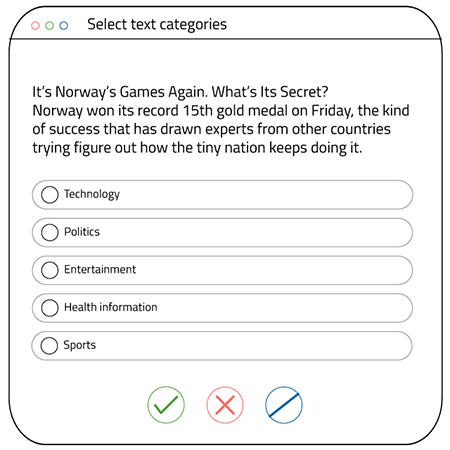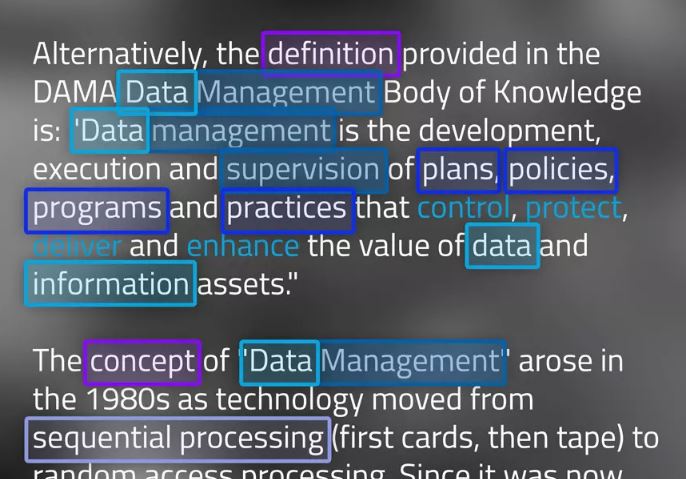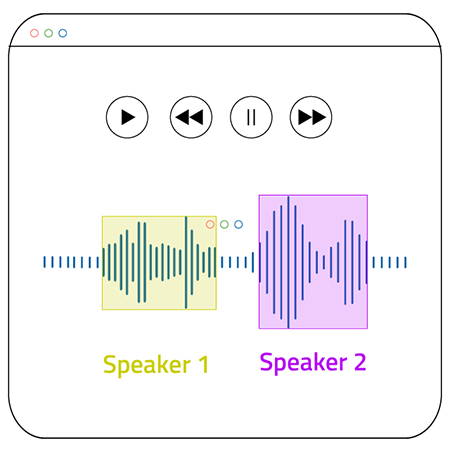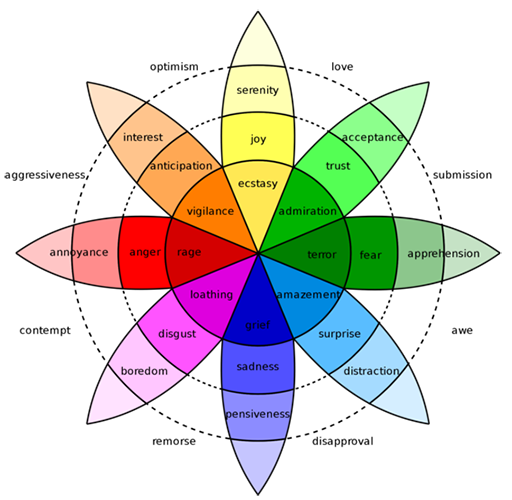Documents and Text Tagging Services to Power NLP Model Training
At Ingedata, we quickly deploy expert teams to analyze complex language blocks extracted from sources such as social media interactions, customer support conversations, online news feeds, internal and external knowledge bases, and legal or contractual documents. This deep language block analysis enables the development of high-quality datasets that fuel Natural Language Processing (NLP) and machine learning models across a wide range of industries.
Our language annotation services are designed to support multiple stages of the AI lifecycle. They are used to train NLP models before deployment, to identify and resolve edge cases that algorithms may miss during real-time production, and to systematically evaluate and improve model performance over time. Since NLP systems—like chatbots, virtual assistants, predictive search engines, and social media monitoring tools—rely on accurate human-parsed data, language block analysis is essential for building models that understand real-world communication with context and precision.

Ingedata creates and deploys specialized teams to analyze conversations across multiple formats, from social media interactions and customer service transcripts to legal contracts, knowledge bases, and news feeds. Our natural language solutions are designed to bring strong human input into your NLP pipeline—whether you're developing a new model or refining an existing one. We support organizations in handling edge cases that algorithms struggle with during production, and we provide structured feedback loops to evaluate model quality throughout its lifecycle. By building your own dedicated team of linguistic experts, we help you streamline data collection, improve annotation speed, and maintain the highest levels of data accuracy.

Implementation of a continuous improvement cycle for a unique customer experience :
















































"Working with Ingedata is an absolute pleasure. They show great professionalism and a genuine commitment to meeting our needs. The collaboration is very smooth, with open communication and timely deliveries, making them a trusted partner. I truly value their expertise and look forward to continuing and expanding this successful partnership for years to come."
Vincent Cornillet, Sr. Director, AI infrastructure and development
“ Ingedata has been a great, effective partner and I’m glad we decided to work with them. I collaborate with Ingedata on the protocol, they form and train a team of doctors to achieve qualitative and high-volume datasets. We used to do all of our annotations in-house, and this just wasn't scalable; Ingedata makes the process much easier.
I submit the MRIs to annotate and launch the project. ”
Sam Seymour, Product Success @Arterys

“ We appreciate Ingedata's dedication to details and speed of action. They understand our business and support us with any issue or question we might have. This business relation is strong and stable and has proven its efficiency. ”
Eric Dugnac, Director Ad Technology & Data Quality @GroupM

“ Ingedata is able to manage speed and quality, two crucial characteristics on our market. Their dedicated team is there to manage any issue and is highly responsive. We manage to create a great partnership along the different launches of Ad campaigns. ”
Caroline Nanthakumar, AdOps Executive @Wavemaker

“ One of our priorities at DeGould is to supply our automotive customers with high accuracy models for vehicle inspection. Quality annotation significantly contributes to this service. As a company, we have been collaborating with Ingedata to ensure we achieve the quality annotation our customers require; Ingedata has proved to be a reliable partner that performs consistently over time. ”
Dean Gould, Machine Learning Engineer @DeGould

“ Ingedata is a crucial partner to fasten the time to market of our AI models. They act with a strong collaborative mindset. I was impressed by the way they onboarded a specialist team in Fashion, that was trained specifically using our previous work with the Institut Français de la Mode. ”
Jaafar Bounaim, CEO @Miroa

“ For quality services, Ingedata is the partner you can rely on. Their well-defined processes have always ensured smooth delivery over the years, even with significant team increases. They have an extensive and dedicated team of skilled operators able to coordinate multiple actions and integrate relevant content from different sources. ”
Yann Rocherieux, Project Manager @Virtual-Expo

“ Ingedata were very agile to integrate various data annotation softwares. At Skillcorner, we developed specific features to make data annotation tasks faster. Ingedata could implement them right away while keeping track of the global project performance. ”
Hugo Bordigoni, CEO @Skillcorner

“ Ingedata brought great project management skills to our project. I was a bit worried about our tight deadlines, but the quality of the project architecture secured the annotation workflows and ensured swift deployment and delivery. We could use Ingedata's annotations to retrain our AI models and hit our model accuracy targets. ”
Marion Rosenstiehl, Program & Product Manager @Suez

“ The collaboration with Ingedata allowed XXII Group to reach a high level of attractivity towards data scientists, since we are now able to provide them with abundant annotated data. These annotations are delivered by Ingedata through our dedicated team of 20 annotators working hand in hand with our team. Considering the very tight market conditions on the data scientists market, this is a considerable business result for us to grow fast. ”
William Eldin, CEO @XXII Group

No matter where you are in your AI journey—just starting out or scaling a mature NLP system—Ingedata provides the expertise, tools, and people to help you succeed. Reach out to us today for a custom proposal and see how our text annotation and document labeling services can power your next NLP breakthrough.






Proudly awarded as an official contributor to the reforestation project in Madagascar
(Bôndy - 2024)